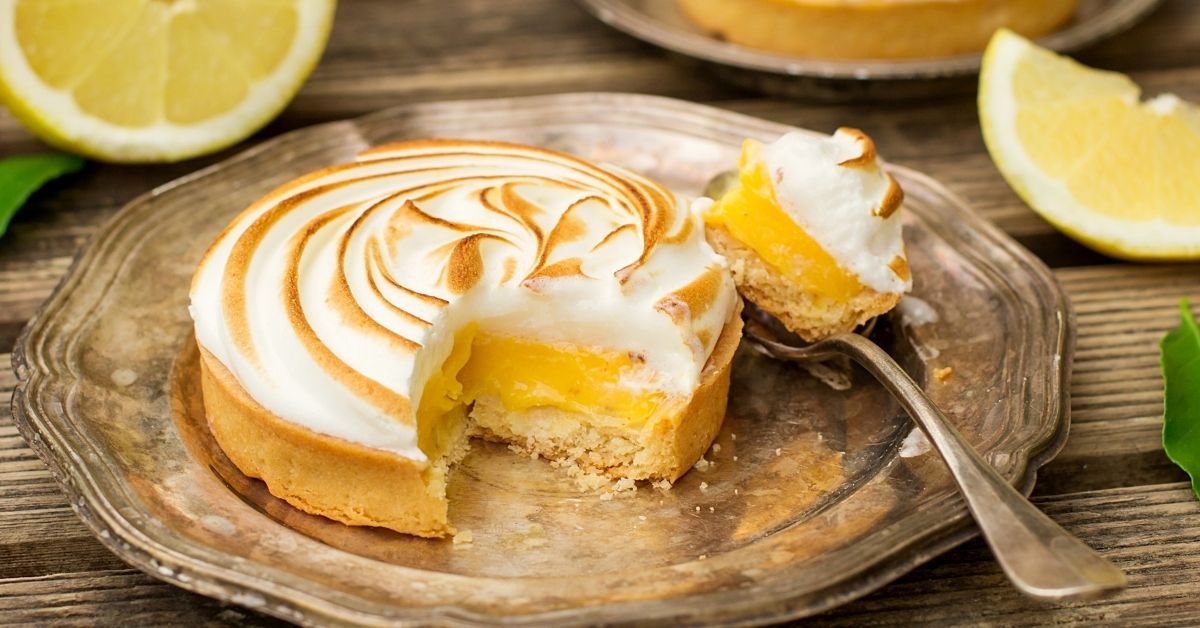“Why, oh why, does my lemon pie always weep?” writes Nadia Niles from Los Angeles. Or have a saggy meringue? Or fall apart when cut? These woes, and more, are frequently sung in chorus for this all-time favorite dessert.
And, after making this pie for days on end―to weed out fact from fiction―my sympathy bordered on self-pity. But persistence prevailed, and here are the secrets for success.
A lemon pie may become watery when put in the oven to brown the meringue, if it is left in the oven too long; or it may water because the filling was not sufficiently cooked before putting into the pastry shell, or it may be from an insufficiency of flour being used in making the filling.

Why does the pie filling get watery?
For a lemon filling that’s glossy and translucent, and firm enough to cut yet melts in your mouth, cornstarch is the thickener of choice. It’s also a risky one because heat and acid (in the lemon juice) can destroy cornstarch’s ability to thicken or stay thick.
Happily, the most foolproof way to make a perfect lemon filling is also the easiest. Just dump in the ingredients―in a specific order, with a combination of cold, then hot water—and cook them together. As the starch granules swell with the heating liquid and begin to form a thickening network, the sugar and egg yolk proteins join forces, like suits of armor, to coat and protect the starch at its vulnerable bonding points from the effects of heat and acid.
Why should the filling be hot when you top it with the meringue?
Steam billowing from a hot filling quickly passes through the baking meringue instead of lingering at the filling-meringue interface. However, some of the steam will collect near the surface of the meringue. As the meringue cools, it contracts (shrinks) slightly―just enough, after a few hours, to pop this moisture onto the surface in tiny golden brown droplets, or beads. The beads form faster if the weather is humid or if the pie is chilled. A tiny bit of cornstarch (such as in the recipe here) whipped with the sugar into the meringue traps some of this moisture and reduces beading.
If the meringue is swirled onto a cool filling and baked, steam in the reheating filling just reaches the meringue. As the pie cools, the steam condenses to form the sweet weeping (sometimes a pool) under the meringue. And when the pie is cut, the meringue is inclined to slip off the wedges.
Meringue tips for a No Weep Meringue Topping – Best Old Fashioned Southern Cooks
FAQ
How do I keep my lemon meringue pie from getting watery?
Why does my lemon pie filling weep?
Why did my lemon meringue pie turn out runny?
How do you thicken runny lemon pie filling?
Why is my lemon pie watery?
The reasons for lemon pie getting watery could be not pre-baking the crust, whipping the lemon custard or meringue too much or not enough, filling the crust while it’s hot, not adding enough corn starch, and not letting it cool before serving. You can do a few things to fix it, depending on the reason.
Does lemon water upset stomach?
Usually not, but some individuals may experience discomfort when consuming lemon water. In that case it is better to avoid this consumption.
Why does my lemon meringue pie get watery?
So why does your lemon meringue pie gets watery, and how to fix it? The reasons for lemon pie getting watery could be not pre-baking the crust, whipping the lemon custard or meringue too much or not enough, filling the crust while it’s hot, not adding enough corn starch, and not letting it cool before serving.
How do you avoid a watery lemon pie?
To avoid a watery lemon pie, start with a crisp crust. Prepare a single piecrust in a pie pan and chill it slightly. Press a sheet of parchment paper or aluminum foil gently into the piecrust and pour some dry beans or rice over the parchment paper, spreading them evenly. The dry beans act as a weight, keeping the crust from puffing up as it cooks.
